

Ned
-
Posts
116 -
Joined
-
Last visited
Content Type
Profiles
Forums
Events
Posts posted by Ned
-
-
34 minutes ago, swansont said:
That's exactly what you expect from time dilation. A moving clock returned to its starting point does not register the same amount of elapsed time as a stationary one.
This is where you are incorrect because the clock in motion wasn't used to measure the elapsed time , the clock at rest was .
The clock in motion measured less frequency over 1.s
The clock at rest measured more frequency over 1.s
Both clocks were measured using the clock at rest second , there is no disagreement on time because both clocks used 1 second based on the clock at rest .
You aren't seeing this evidential point I'm making but rather instead resort back to the Hafelle and Keating alleged evidence . Evidence which I have provided counter evidence against .
QuoteI've asked a number of questions an expert on time would have no problem answering, and yet you have not answered them. I've pointed out a number of errors you have made, so there are things you don't know.[/quote]
I thought I had answered all your questions , I guess you must have not recognised them as an answer . In the future I will be more considerate and quote your questions .
0 -
-
3 minutes ago, iNow said:
If you did, then we can add liar to the list of valid descriptors of you (alongside time wasting asshat).
I'm not a liar , I have spent years of time discussing time . There isn't anything I don't know about time which makes me an expert .
Time isn't exactly a difficult subject !
Anyway , better things to do than replying to your trolling .
0 -
43 minutes ago, swansont said:
The clocks started out synchronized and the time readouts differed after the trips.
If it shows no time difference, then it doesn’t represent the experiment. Which just means it’s a crappy drawing.
It shows frequency difference which is exactly what the experiment showed .
You said ''Sort of correct. Yes, clocks in motion were compared with clocks on the ground. That’s how you can tell if clocks ran fast or slow.''
Can't you see the implications of this ?
Lets use ticks , it's easier to explain .
The clock on the ground ticked 10 ticks , the clock in motion ticked 9 ticks compared to the ground clock .
The clock on the ground and the clock in motion , both experience 10 ticks have passed .
Ground clock 10/10Ticks
Clock in motion 9/10Ticks
No time dilation .
43 minutes ago, swansont said:The clocks started out synchronized and the time readouts differed after the trips.
If there is ten ticks in a mm and we both start to travel synchronised at c for 1mm , you haven't travelled 9 ticks whilst I travelled 10 .
That is why d/t also proves there is no time dilation.
Added - Starting at x0 , x0+x0=x1 of history .
The rate of history (time) is actually instant as my math shows . There is no space or time between increments that can dilate . The time line of history is a continuos unbroken line that consists of points . A present point in time changes instantly to the next point , that is how time works .
Did I say I was pretty much an expert on time ?
0 -
3 minutes ago, iNow said:
You misspelled delusion again.
Why do you seak attention ? Nothing delusional about real life observations . I guess I am more observant than you .
-1 -
-
3 hours ago, joigus said:
I'd say you may be minutes away from being done.
Oh, yes. Your "evidence." I'm very impressed.
It isn't my evidence , it is an everyday observation anyone can perform using an object and light source . We can observe this when we create a shadow , only the surface becomes darker in appearance , the space in shadow remains transparent . If darkness existed we would observe the space in shadow to become less clear in appearance , the view of the surface would be obstructed by darkness .
1 hour ago, Intoscience said:Space appears dark (black) in colour because black is the colour our brains attribute to the lack of detectible light entering our optical system. It has nothing to do with the colour of "space". Colour is nothing more than the frequency of the light being reflected off the object which is being illuminated. When the light is reflected it will appear as a colour, or a combination of colours, and possibly a multitude of colours if the light is reflected at different frequencies, like a prism.
Space doesn't reflect visible light so will just appear "dark", this doesn't mean space has a colour, its just the way we perceive it visually.
Just ignore the window in the diagram will you ?
0 -
3 hours ago, MigL said:
So, if I draw a picture where the two timelines are unequal, that will be proof that there is time dilation ???
If it wasn't so sad, I'd be laughing.One can only hope ...
In the Hafele and Keating experiment the time lines weren't unequal , that is the problem . If you drew unequal lines , you wouldn't be drawing that experiment .
moderator -
Sort of correct. Yes, clocks in motion were compared with clocks on the ground. That’s how you can tell if clocks ran fast or slow.Clock in motion : frequency over 1.s
Clock at rest :frequency over 1.s
Wheres the time difference ?
2 hours ago, swansont said:A diagram is not evidence. Evidence is (as an example) the results of the Hafele-Keating experiment, that showed that the clocks ran at different rates
Sort of correct. Yes, clocks in motion were compared with clocks on the ground. That’s how you can tell if clocks ran fast or slow.
Clock in motion : frequency over 1.s
Clock at rest :frequency over 1.s
Wheres the time difference ?
The diagram shows no difference of time and my explanation , explains why .
0 -
45 minutes ago, joigus said:
No. It's very easy to see it's wrong. Light can be detected even when it's not visible. The whole thing has nothing to do with human perception. Your eyes are adapted to be particularly sensitive to green, for good evolutionary reasons, and totally blind to ultraviolet or infrared light.
Period.
Are we done?
Hmm., no we are not , my diagrams show there is no darkness and you are incorrect . You can experiment with my diagrams in real life and observe that the space is not darkened when in shade . Only the surface is darkened .
-1 -
1 hour ago, swansont said:
More random stuff in an image, with no explanatory power.
We are discussing time dilation and I provided a diagram of the process that is counter evidence against sciences claim of a time dilation . The diagram clearly shows there is no time dilation as time one is equal to time two t=t' .
It additionally shows that frequency one is not equal to frequency two f1≠f2 .
If you recall frequency is the amount of occurences over a unit of time , you can't use frequency as a unit of time .
In the Haffele and Keating experiment the clock in motions measure of frequency was measured by the stationary clock , the defined unit of 1 second .
Additional contradiction , the observer using the clock in motion claims time slowed down , so factually they are claiming less frequency over less time which demonstrates no time dilation and contradiciton .
0 -
19 minutes ago, Phi for All said:
This sounds distinctly like a bad-faith argument posed by someone NOT interested in anything but their own perspective. Many animals, including humans, have extraocular photoreceptors in our skin and central nervous systems, even inside some of the organs. This supports the concept that light and its absence are detectable outside normal sensory perception. Shadows also support the idea that as you remove light and its properties, darkness is the result.
Evidence 1
12 minutes ago, Phi for All said:The object IS darker, because there isn't as much light reflected from it. It would still be darker if you weren't looking at it. And if you keep removing the light, darker and darker and darker finally become darkness. Do you understand now?
Yes it goes darker and darker in appearance because it isn't being illuminated . The colour of the object becomes darker in appearance but there is no change of wavelength .
-2 -
3 minutes ago, joigus said:
Photodetectors not clicking.
3 minutes ago, joigus said:Photodetectors not clicking.
Which detect unbounded wave energy , they don't detect what the space is like in appearance . We can say the space is without unbounded electromagnetic radiation and all objects are visibaly dark in appearance but we can't declare the space is visible dark because it is transparent and has no mechanism to be dark or light in appearance .
I understand it is a difficult concept to ''imagine'' but that is what the physics suggests .
1 minute ago, Phi for All said:This sounds distinctly like a bad-faith argument posed by someone NOT interested in anything but their own perspective. Many animals, including humans, have extraocular photoreceptors in our skin and central nervous systems, even inside some of the organs. This supports the concept that light and its absence are detectable outside normal sensory perception. Shadows also support the idea that as you remove light and its properties, darkness is the result.
I am glad you mentioned shadows because if you observe an object that is placed in shadow , you will observe the surface of the object appears darker visually but the space remains visually transparent and unaltered in appearance .
0 -
9 minutes ago, MigL said:
Pictures and diagrams are not proofs ...
Post something that makes sense, back it up with evidence, or go play in another sandbox.
You are incorrect when a diagram shows the experiment and the discourse supports the claim . The evidence is the method of hafele and keating experiment and the results .
The evidence is definition , what is frequency ?
I'm 100% correct on this and have proved it in this thread with discourse and diagrams .
The last diagram and explanation ''killed it '' , I'll take on science anyday because they don't scare me from revealing the truth .
The Caesium in motion frequency was measured by the clock at rest , end of argument , I win this debate .
0 -
19 minutes ago, MigL said:
Darkness does exist.
Not sure about your thinking.What evidence do you have of the existence of darkness other than it being a perception ?
-1 -
13 minutes ago, joigus said:
Perhaps you should start your study of physics with a dictionary? "Opaque" and "dark" are different attributes. Opaque basically means "it doesn't let light go through it," while dark means "there is no light there."
I perhaps should of said visually opaque and put ''opaque'' . I am aware of what opaque means but sometimes there is no other word to use to describe something . Unless you have a better word to use from a dictionary , then visually ''opaque'' will have to do !
0 -
52 minutes ago, swansont said:
Again, this is a revelation only to you.
52 minutes ago, swansont said:Again, this is a revelation only to you.
Perhaps but I suspect many people think that space itself turns opaque when there is no unbounded light in the space . However , in revelation to all , quantum fields and unbounded light travelling through space are indistinguishable from space in appearance , also being transparent and invisible to the human eye .
0 -
39 minutes ago, swansont said:
But you don’t know this, because you are way out if your depth.
I have re-drawn the model to show you where science are going wrong . ''Frequency is the number of occurrences of a repeating event per unit of time. '' Frequency can't be a unit of time ,period . You can't have frequency is the number of occurrences of a repeating frequency . Added - Science forgets that the frequency of the clock in motion is being measured by the ground state clock at rest . The second being defined to the clock at rest .
-1 -
9 minutes ago, swansont said:
I failed to recognize them as proofs because they are not. You’ve been told this several times, and yet you seem incredibly uncurious as to what is lacking. You have a number of people familiar with, and actually trained in science who could critique your “efforts”
As you have acknowledged, temperature affects all atoms’ transitions, and thus cesium is not unique, so this can’t be a consideration. The earth’s non-constant spin was apparent well before atomic clocks were invented; pendulum clocks, and later quartz clocks, were able to show this.
You’re 0-for-2
(you also seem to be confusing accuracy and precision)
You don’t say what the 3.24 cm refers to, and you should know that in a cesium beam clock such as a 5061 or 5071 (formerly made by HP) there is no visible light involved - the atoms are detected - and should also know that the time-of-flight to the detector doesn’t matter in the measurement.
But you don’t know this, because you are way out if your depth.
I said earlier that if I remember correctly , the gap between the Caesium and detector is 3.24cm. I know there is no visble light involved .
I'm not out of my depth , dimensional analysis isn't a difficult task .
You really aren't seen the evidence I have provided which is evidence . Diagrams and thought experiments are often accepted in scientific theory . Einstein explained time dilation using thought experiments etc .
I ask you to reconsider this diagram and answer the question , how much time (history) does the bottom line experience in the diagram ? My answer is 1.s although they only measure 0.5s .
0 -
41 minutes ago, swansont said:
“proofs”? You’ve asserted it, with no supporting science, and I countered that assertion. You’ve not addressed what I have said in rebuttal.
Your contention that some other standard could have been chosen, that would not be subject to temperature effects, contradicts this.
Perhaps you can discuss the reasons cesium was chosen as the standard, to demonstrate your understanding of the issues.
News flash: absolutely nobody is claiming that temperature changes control time. Except you.
“field energy differences”?
How, exactly, does this allegedly slow down the frequency?
I have offered several proofs that you must of failed to recognise as proofs . My provided diagram and discourse is proof .
The Caesium standard was chosen because science found at 0k it was a constant frequency and because the Earth spins wasn't a constant , we needed a more accurate way of measuring time .
I should of said a length expansion rather than contraction sorry . If the direction of light is travelling the direction the plane is travelling towards the detector , then as the light moves ''forward'' . the detector also moves forward . The light is slightly delayed in reaching the detector that way . I drew it for you !
0 -
30 minutes ago, swansont said:
Thank you, captain obvious.
That’s the standard understanding of darkness: the absence of light.
Yes that is the present definition of darkness but the space between objects is neither dark or light at any time . When the Earths surface goes into nightime , the surface and objects become dark in appearance rather than the space . The space always remains transparent in appearance .
0 -
2 hours ago, Intoscience said:
What do you mean by darkness?
We perceive (observe with our eyes) space to be dark (black) because that is the "colour" our brains attribute to the lack of enough photons entering our eyes at the perceptible frequency we are designed to detect. Darkness just means the lack of brightness, in other words a reduction in photons (EM radiation) within a certain frequency that is detectable with the human eye.
As an example, infra red cameras/scopes etc, makes visible EM radiation at a different frequency that would normally be undetectable with the naked eye.
Darkness is when visible objects are in shadow , space is not black or dark in appearance , that is an optical illusion of transparency because there is no thing that is illuminated to see or no thing within range to see .
0 -
1 hour ago, Intoscience said:
You seem to want to model with absolutes, but unfortunately the universe doesn't work this way. The sooner you understand this the better! Then maybe you can start to re-think some of your ideas and realise why they are incorrect and some completely absurd.
The problem with relativity is , it isn't all it seems to be . Maybe you need to re-think because we don't see things or events in the past as proven by this diagram .
-1 -
6 hours ago, J.C.MacSwell said:
Is there any space where no electromagnetic radiation exists?
I hear you but even in a space where there is no electromagnetic radiation , the space still isn't dark or light , it remains transparent . Space itself has nothing to reflect light therefore has nothing that can be visible dark .
2 hours ago, Sensei said:Photons are emitted by some material, for example, as a result of the temperature of an object (thermal emission). When they hit some material, they can be 1) absorbed 2) reflected 3) refracted. The chemical and physical properties determine at what frequency/wavelength/energy of the photon this will occur. Material may be transparent at one pressure and temperature and opaque at other conditions. We see things around us when photons are reflected by an object toward us and the eye absorbs the photons, causing an electrical impulse to be sent to the brain to decode what we see.
The lack of photons in the visible range of the spectrum does not mean that we cannot "see"/detect objects, e.g. radar does this at different frequencies than our eyes.
Are you sure this information is true ? I know that is how present information desribes sight but what if when we open our eyes , our minds become entangled with quantum fields ? Photons illuminating visible matter rather than reflecting into our eyes ?
If space is transparent , therefore see through , there is no requirement for photons to enter our eyes to see . My problem with the present information is that science thinks everything we see is based on carrier signals like some sort of TV . Just because we discovered wave energy , that doesn't automatically equate to the same process in regards to vision .
0 -
Just now, iNow said:
You misspelled delusional… or did you perhaps mean boring?
You have to resort to insults , no more replies to you !
0

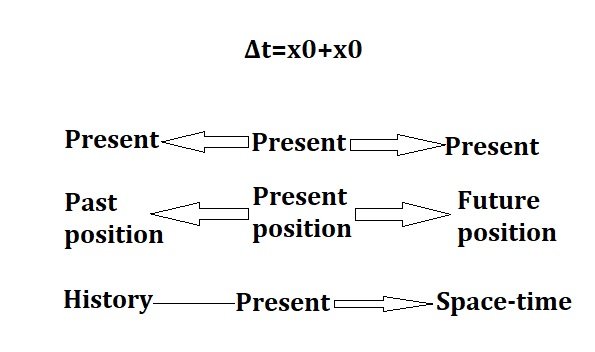

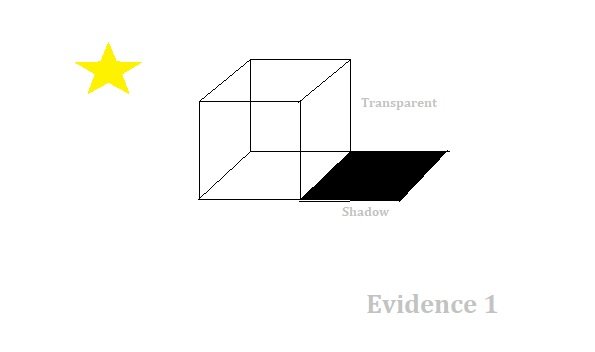
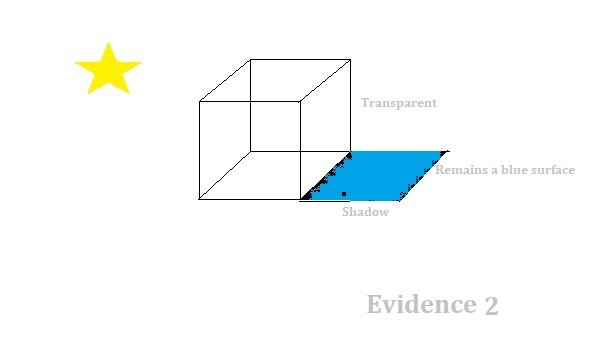
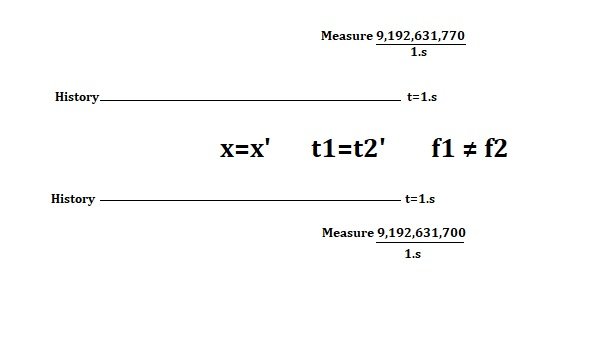
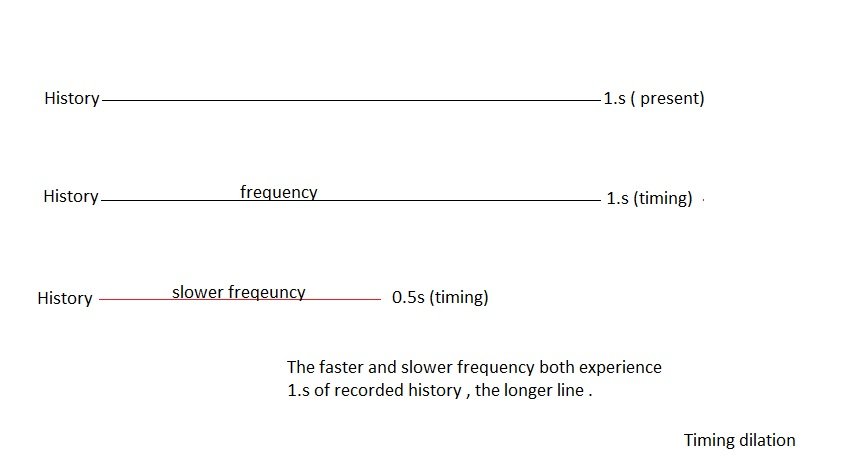
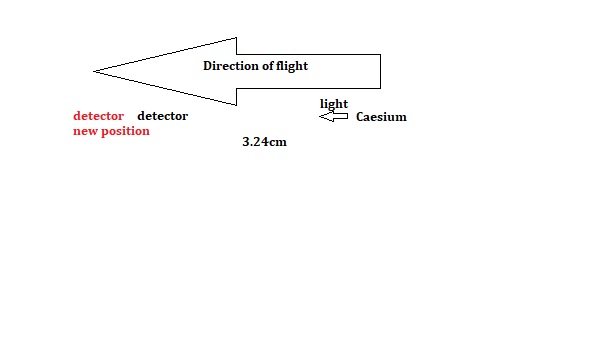
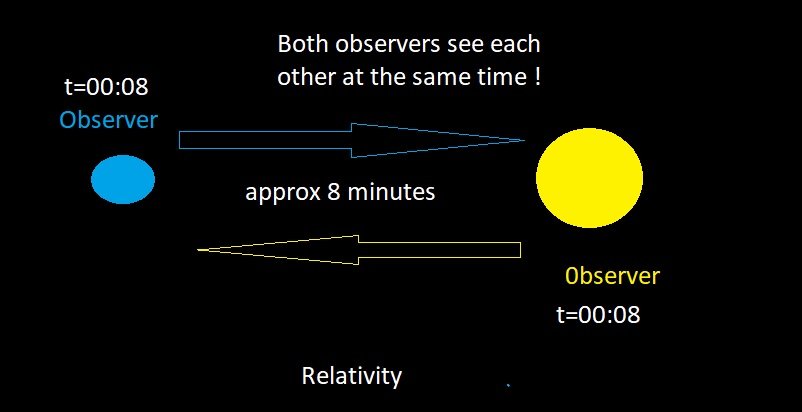
Time dilation or a change of frequency ?
in Modern and Theoretical Physics
Posted
Firstly if both clocks were used to measure time , the clock in motions claim is less frequency in less time . Therefore self contradicting .
I gave an alternate correct ''math'' model before .
Δf∝ΔU Change of frequency is proportional to a change of internal energy
No subjective added time value required !
This can be proven by simply changing the Enthalpy